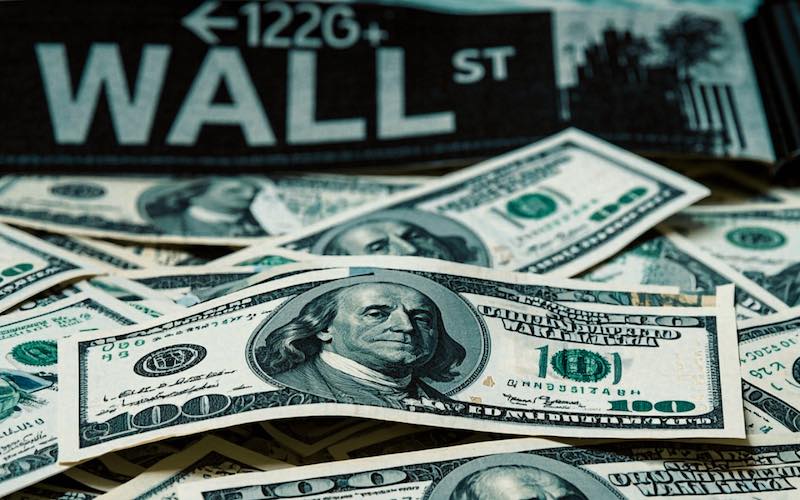The USD/JPY exchange rate has a long upper shadow. Is 146.70 the last line of defense for bulls?
2025-09-01 15:26:16

It is noteworthy that the current market's hawkish pricing in the Bank of Japan's policy stands in stark contrast to the Federal Reserve's bets on two rate cuts by the end of 2025. This divergence in policy expectations not only dampens the aggressive entry of dollar bulls but also exerts substantial pressure on the USD/JPY exchange rate. Furthermore, with a flurry of US macroeconomic data expected to be released earlier this month, traders are generally choosing to wait and see, holding off on aggressive directional bets. This cautious sentiment is also constraining dollar bulls.
The yen gained support as fundamental data turned positive
The final value of S&P Global Japan Manufacturing PMI in August was 49.7. Although it was still below the boom-bust line, it showed that the deterioration of the industry's operating conditions had narrowed and was only a slight contraction, and the economic climate had improved marginally.
According to data released by the Japanese Ministry of Finance on Monday, corporate capital expenditure on factory equipment increased by 7.6% year-on-year in the fourth to sixth quarters of 2025 (the second quarter of Japan's fiscal year). The resilience of capital expenditure provides certain support for economic fundamentals.
Escalating geopolitical conflicts highlight the yen's safe-haven properties
In terms of the geopolitical situation, US President Trump made it clear in an interview with the Daily Caller that he was skeptical about the possibility of a bilateral meeting between Russian President Putin and Ukrainian President Zelensky, further increasing the uncertainty of the geopolitical game.
Last weekend, Russia launched a large-scale airstrike on Ukraine, mobilizing more than 500 drones and 45 missiles. In response, Zelensky stated that he would retaliate and ordered more strikes on targets deep inside Russia, significantly escalating the intensity of the Russia-Ukraine conflict.
On the Israeli side, the Israeli army carried out intensive strikes on the suburbs of Gaza City through coordinated air and ground operations overnight; Israeli Defense Minister Katz confirmed that Abu Ubaida, a spokesman for the armed wing of Hamas, had been killed, and the situation in the Israeli-Palestinian conflict remained tense.
The above-mentioned geopolitical risks continue to ferment, providing an upward push for the safe-haven Japanese yen; and the market's expectation of the Bank of Japan to raise interest rates further consolidates the support base of the Japanese yen.
Expectations of a dovish Fed turn are rising, positive for the yen
On the other hand, on the US dollar side, traders' current pricing of the Fed's policy has clearly shifted towards easing - the market believes that the probability of the Fed cutting interest rates by 25 basis points in September and completing two rate cuts before the end of the year has increased significantly.
The divergence in policy expectations between the Bank of Japan and the Federal Reserve will continue to be beneficial to the low-interest currency yen; coupled with the current overall bearish pattern of the US dollar, the upward space of the USD/JPY exchange rate will be strictly limited.
It should be noted that the U.S. market was closed on Monday due to the Labor Day holiday, and liquidity was relatively light. In addition, key U.S. macroeconomic data, including non-farm payroll data, will be released soon this week. Before that, traders are likely to remain cautious and refrain from making aggressive directional operations.
Technical Analysis:
From a technical perspective, USD/JPY remains trapped within a four-week range. The lower edge of the range is anchored near 146.70, which continues to be considered key support. A break below this level would signal a sell-off. If the rebound does not exceed 146.70, the pair is likely to test the August low near 146.21, and then head towards the 146.00 mark. Any follow-through selling would signal a new bearish trend for the pair, potentially opening the way for a deeper correction.
On the contrary, if the exchange rate breaks through the resistance range of 147.50-147.70, although it may release upward momentum briefly, we need to be wary of selling pressure before the upper integer level of 148.00 - this position is the upper edge of the current trading range and is the key dividing point between long and short.
If it can decisively break through 148.00, it will trigger a short-covering rally, pushing the exchange rate closer to the recent high of 148.75-148.80; this area is close to the 200-day simple moving average (SMA). If the exchange rate can hold above 149.00, the short-term trend will reverse and officially turn to bullish dominance.

(USD/JPY daily chart, source: Yihuitong)
At 15:25 Beijing time, the USD/JPY exchange rate was: 147.11/12
- Risk Warning and Disclaimer
- The market involves risk, and trading may not be suitable for all investors. This article is for reference only and does not constitute personal investment advice, nor does it take into account certain users’ specific investment objectives, financial situation, or other needs. Any investment decisions made based on this information are at your own risk.





















